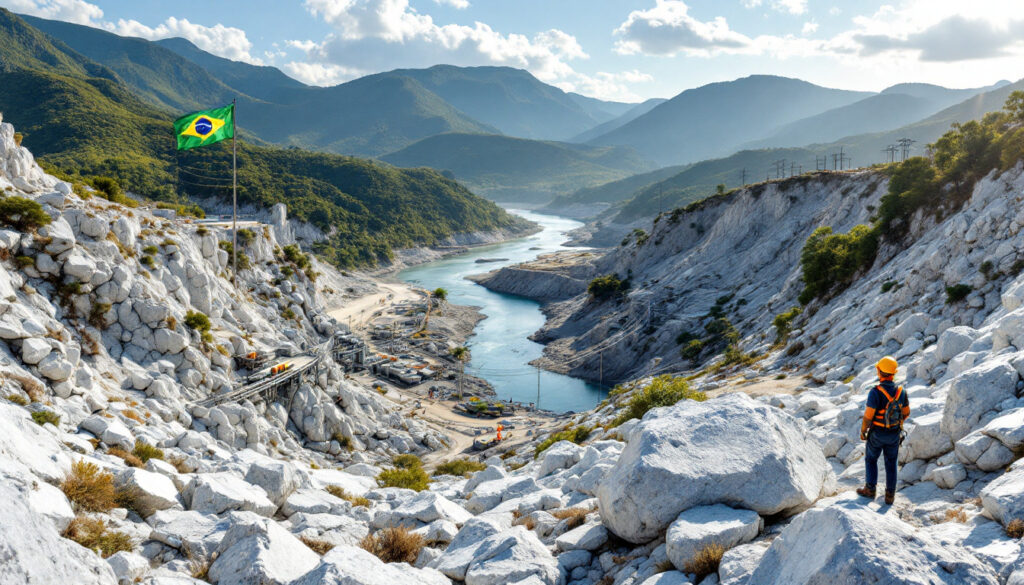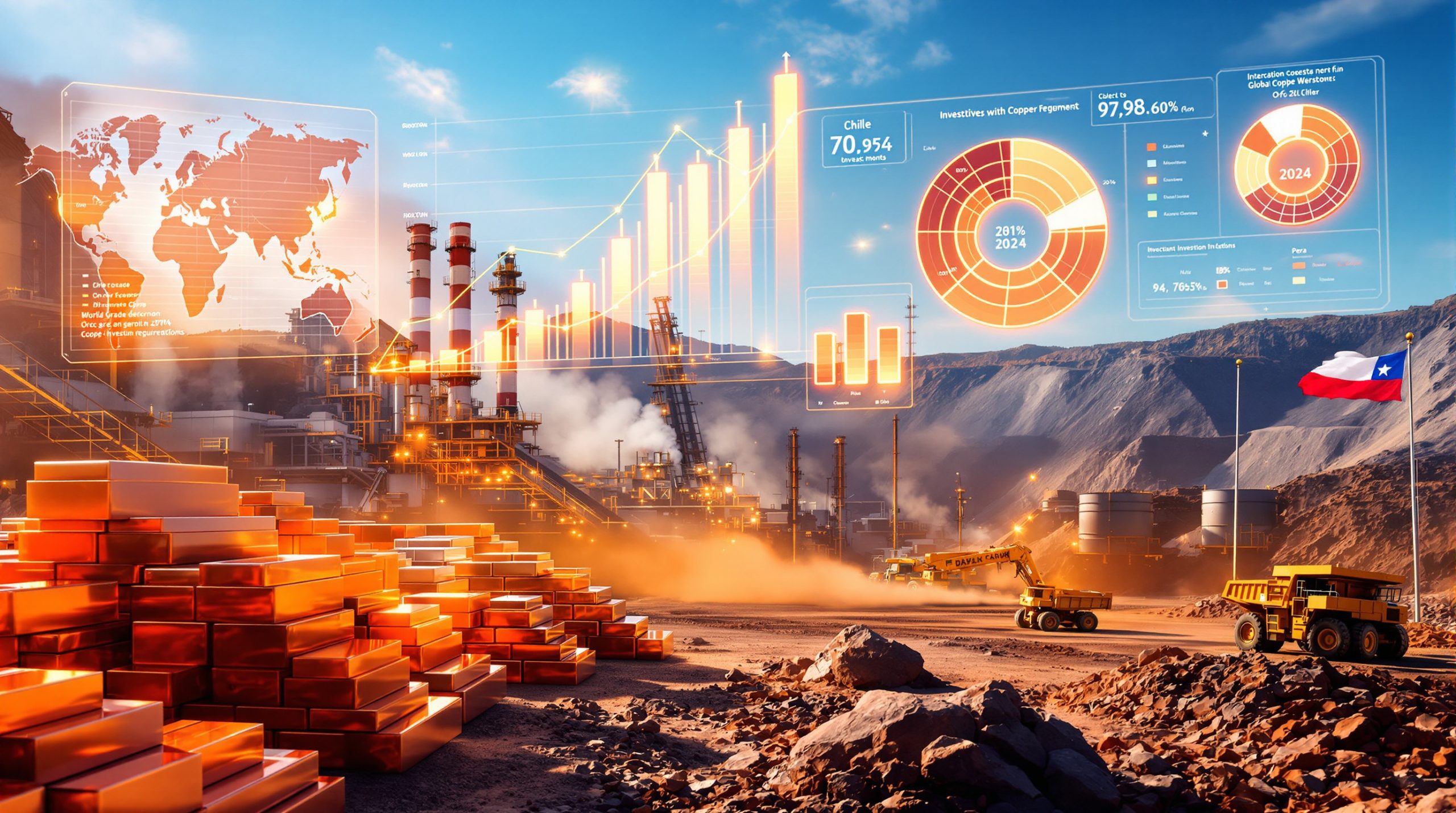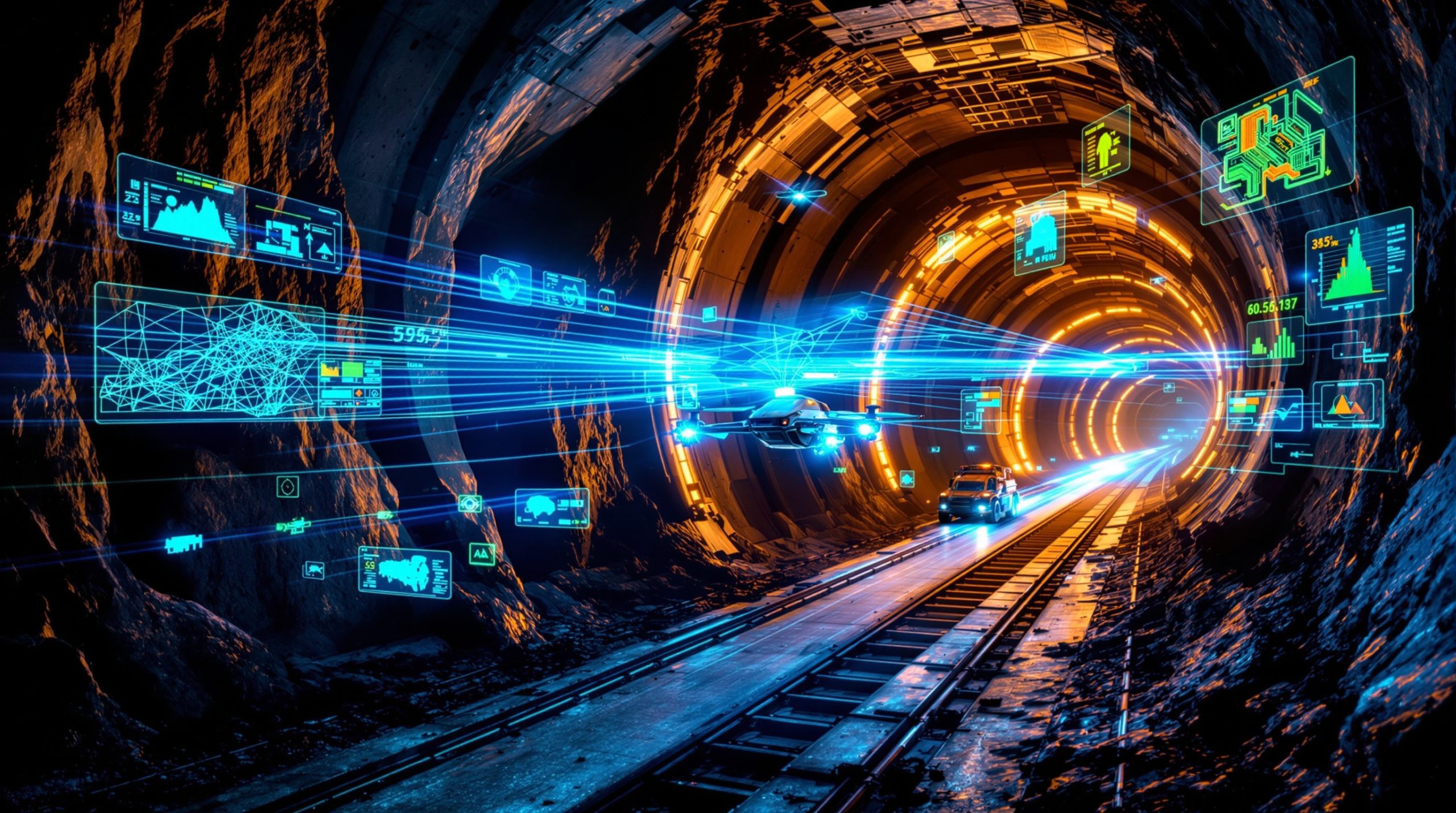Brazil's Low-Cost Lithium Production: Emerging Global Powerhouse or Unfulfilled Promise?
Brazil is positioning itself as a potential game-changer in the global lithium market, with unique advantages that could establish it as one of the world's most cost-competitive lithium producers. The country's emerging lithium sector features a compelling combination of geological benefits, renewable energy infrastructure, and favorable operating costs that set it apart from traditional lithium powerhouses. Understanding these lithium market dynamics is crucial for investors looking to capitalize on Brazil's potential.
What Makes Brazil a Potential Low-Cost Lithium Producer?
Geological and Operational Advantages
Brazil's lithium production benefits from exceptional geological formations, particularly in the "Lithium Valley" region of Minas Gerais state. This area contains high-grade spodumene deposits in pegmatite formations that enable efficient open-pit mining with recovery rates exceeding 90%. Brazilian operations typically achieve 6-7% Li₂O concentrate compared to the global average of 5.5%, providing a significant competitive edge.
The extraction efficiency translates directly to production costs between $450-500 per tonne for spodumene concentrate—approximately 30-40% below the current global market price of $760-790 per tonne. With estimated reserves of 6.3 million tonnes of lithium and average ore grades of 1.4% Li₂O, Brazil's resource quality underpins its long-term cost competitiveness.
Energy and Labor Cost Benefits
Brazil's renewable energy infrastructure provides a substantial competitive advantage. Nearly 99% of electricity in Minas Gerais comes from renewable sources, primarily hydroelectric and solar power. This clean energy matrix not only reduces operational costs but also significantly enhances the environmental profile of Brazilian lithium.
The cost benefits are measurable: energy costs average around $40/MWh in Brazil compared to $75/MWh in Chile's lithium expansion efforts. This renewable foundation reduces the carbon footprint to less than 50 kg CO₂/tonne of lithium carbonate equivalent (LCE), compared to over 500 kg in regions dependent on fossil fuels.
Labor represents another cost advantage for Brazilian producers, with mining labor costs averaging approximately $12/hour versus $35/hour in Australia. This substantial difference contributes significantly to Brazil's position as a low-cost producer on the global stage.
Comprehensive Cost Advantages
Vinicius Alvarenga, CEO of Companhia Brasileira de Lítio (CBL), emphasizes Brazil's multi-faceted competitive position:
"Brazil can be seen as a low-cost reference compared with other global spodumene producers. We compete very well with several geographies: better costs due to geological issues, cheaper labor and electricity… There's a list of factors that makes us competitive."
Henrique Tavares from Invest Minas adds another perspective on Brazil's advantages:
"Our energy matrix and ESG governance attract foreign investors seeking sustainable supply chains."
These combined factors—geological quality, energy costs, labor rates, and sustainability profile—create a compelling value proposition for Brazil's lithium sector that few other jurisdictions can match.
How Does Brazil's Current Lithium Production Compare Globally?
Current Production Capacity
Despite its considerable potential, Brazil's lithium industry remains modest compared to established producers like Australia and Chile. Currently, Brazil accounts for approximately 4% of global lithium supply, while Australia dominates with significantly larger production volumes of 3.1 million tonnes of spodumene annually.
Brazil currently has three operational lithium plants:
| Company | Current Production | Production Type | Expansion Plans |
|---|---|---|---|
| CBL | 45,000 tpy spodumene concentrate + 2,000 tpy LCE | Hard-rock | Expanding to 100,000 tpy spodumene + 6,000 tpy LCE |
| Sigma Lithium | 270,000 tpy spodumene concentrate | Hard-rock | Expanding to 520,000 tpy by Q4 2025 |
| AMG | Production data not specified | Hard-rock | Expansion plans not specified |
Future Production Forecast
According to Fastmarkets' research, Brazil's lithium carbonate equivalent (LCE) production is expected to reach approximately 57,500 tonnes by 2025. The country's lithium output is projected to grow at a compound annual growth rate (CAGR) of 6% between 2025 and 2035, potentially reaching about 102,000 tonnes of LCE by 2032.
The Brazilian Development Bank (BNDES) has stated an ambitious goal:
"Brazil aims to supply 15% of global lithium demand by 2030 via sustainable practices."
If this target is achieved, it would represent a significant leap from Brazil's current market position and establish the country as a major player in the global lithium supply chain.
Project Pipeline
Beyond the three operational plants, Brazil has approximately 25 lithium projects in various stages of development. Atlas Lithium plans to commence production of up to 150,000 tpy of battery-grade spodumene concentrate by the second half of 2026, while numerous other projects are advancing through exploration and development phases.
Industry experts suggest that if current projects proceed as planned, Brazil could potentially reach a production capacity of 2 million tonnes of spodumene concentrate per year by the end of the decade. This would represent approximately 12% of global supply, significantly elevating Brazil's position in the lithium market.
The acquisition of Latin Resources by Australian lithium miner Pilbara Minerals, which invested $120 million in the Salinas Project, demonstrates growing international confidence in Brazil's lithium potential and may accelerate development timelines.
What Challenges Are Hindering Brazil's Lithium Development?
Funding and Financial Barriers
Despite Brazil's potential as a low-cost producer, securing adequate funding remains a significant challenge for lithium projects in the country. The capital-intensive nature of lithium development, combined with market volatility and stringent lending requirements, has created bottlenecks in project advancement.
Rodrigo Menck, board director at Atlas Lithium, highlights this reality:
"With the lower lithium prices, projects are taking longer in Brazil; some due to lack of funding — they are taking longer to mature, and no one is in a hurry to make money."
The Brazilian Development Bank (BNDES) typically requires approximately 150% collateral for project loans, creating additional hurdles for junior mining companies. BNDES acknowledges that strategic mineral projects face multiple risk factors—geological, engineering, and market fluctuations—that complicate funding arrangements.
Bureaucratic and Regulatory Hurdles
Brazil's complex regulatory environment presents substantial challenges for lithium developers. The licensing process averages 18-24 months compared to just 6-12 months in Australia, creating delays in project implementation and increasing overall development costs.
Menck explains the practical implications:
"Brazil still has many challenges – licensing is something that takes time. How to ensure funding after a long licensing process? Implementation is slow. All this limits the pace of projects' implementation and causes delays."
These regulatory bottlenecks have tangible consequences, such as Atlas Lithium postponing its production start to the second half of 2026 due to the combined effects of funding shortfalls and permitting delays.
Infrastructure Limitations
Infrastructure deficiencies, particularly in transportation, present significant obstacles to efficient lithium production and export. The "Lithium Valley" region primarily relies on road transportation, with no railway connections available. Only approximately 30% of roads in the region are paved, increasing transport costs by roughly 20%.
This limitation adds $50-70 per tonne to logistics costs compared to rail alternatives available in Australia. The absence of efficient transportation infrastructure increases both operational expenses and project development timelines, potentially eroding some of Brazil's inherent cost advantages.
How Is Brazil Addressing These Development Challenges?
Government Initiatives and Funding Programs
Brazil is implementing several initiatives to overcome the challenges facing its lithium sector. In January 2025, BNDES and Brazil's Funding Authority for Studies and Projects (Finep) launched a public notice calling for proposals to promote business plans for developing sustainable strategic materials in Brazil, including lithium.
BNDES has established a $500 million strategic materials fund aimed at mobilizing investments across various sectors of the battery supply chain. The bank is positioning itself as an anchor shareholder in a Private Equity Investment Fund (FIP) dedicated to mineral exploration and development of strategic mineral mines, with anchor investments covering approximately 30% of project equity to reduce risk.
A BNDES spokesperson emphasized the strategy behind these initiatives:
"Strategic mineral projects need risk-sharing mechanisms to attract capital."
Case Study: Sigma Lithium's BNDES Financing
Sigma Lithium represents a successful example of navigating Brazil's funding landscape. In September 2024, the company secured a binding commitment from BNDES for a development loan of 487 million Brazilian Reais (approximately $89 million) to fully fund the construction of its second plant.
This financing is expected to generate over $200 million in additional export revenue and demonstrates that, despite challenges, significant funding can be secured for viable projects in Brazil's lithium sector. The loan structure provides a potential template for other developers seeking to advance their projects.
Foreign Investment Interest
Despite the challenges, Brazil's lithium sector continues to attract foreign investment. Rodrigo Menck notes:
"Foreign investors like Pilbara validate Brazil's potential, but local incentives are lacking."
In August 2024, Australian lithium miner Pilbara Minerals acquired Latin Resources, which owns a significant spodumene project in Brazil. This acquisition signals international confidence in Brazil's lithium potential and may establish a pathway for additional foreign direct investment in the sector.
What Makes Brazilian Lithium Environmentally Competitive?
Renewable Energy Integration
Brazil's lithium production benefits substantially from the country's predominantly renewable energy matrix. In Minas Gerais state, where most lithium operations are located, 99% of electricity comes from renewable sources (primarily solar and hydroelectric).
This renewable energy foundation significantly reduces the carbon footprint of lithium production to less than 50 kg CO₂/tonne LCE, compared to over 5,000 kg in China and other regions dependent on coal-fired power. This environmental advantage is increasingly valuable as battery manufacturers and automakers prioritize low-carbon supply chains to meet regulatory requirements and consumer expectations.
Water Management and Waste Reduction
Brazilian lithium producers have implemented advanced water management and waste reduction strategies that exceed global industry standards:
- Sigma Lithium reuses 90% of the water used in mineral treatment compared to a global average of 50%, significantly reducing freshwater consumption.
- The company employs dry-stacking waste management techniques that eliminate the need for tailings dams, reducing environmental risk by approximately 70% according to company reports.
- CBL and AMG have incorporated circular economy principles, including waste recovery and reprocessing, which generates approximately $10 million annually in by-product sales for AMG.
These lithium production innovations are setting new standards for the industry globally.
Social Sustainability Initiatives
Beyond environmental considerations, Brazilian lithium producers have established various social sustainability programs:
- Sigma Lithium created the non-profit Green Lithium Institute, which will receive 500 million Brazilian Reals in funding for socio-environmental projects in the cities of Araçuaí and Itinga.
- CBL has contributed to community development through the construction of a school in Araçuaí, a public daycare center in Divisa Alegre, and collaboration with the São Vicente de Paulo Hospital, including the donation for a blood donor center.
- AMG has implemented various social programs in its operational regions, focusing on community development and support.
These initiatives align with UN Sustainable Development Goals and strengthen the social license to operate for lithium producers, potentially reducing project development risks and enhancing long-term operational stability.
Will Brazil Develop Downstream Lithium Chemical Production?
Current Chemical Processing Capacity
Brazil's downstream lithium chemical processing capacity remains limited compared to its potential. Currently, CBL operates a small-scale refinery producing approximately 2,000 tonnes of lithium carbonate equivalent (LCE) annually, with half being exported and half used domestically. This represents a tiny fraction of global refining capacity, which is dominated by China with approximately 500,000 tpy.
This limited chemical processing capacity means that most of Brazil's spodumene concentrate is exported for processing elsewhere, representing a missed opportunity for value addition within the domestic economy.
Challenges for Large-Scale Chemical Processing
According to industry experts, large-scale chemical processing faces significant hurdles in Brazil. Rodrigo Menck of Atlas Lithium notes:
"Large-scale chemical plants for refining lithium for battery manufacturing are very expensive. It needs a large, dedicated production and an economically viable plant. Brazil would need to have a bigger supply of spodumene to cover the chemical plants. I don't see it in the short term."
The economics of lithium refining in Brazil are challenging, with estimated costs of $8,000-10,000 per tonne of LCE compared to approximately $6,000 in China due to economies of scale. This cost differential makes it difficult to justify major investments in Brazilian refining capacity absent significant government support or other incentives.
Policy Support for Domestic Demand
CBL's CEO Vinicius Alvarenga highlighted that Brazil lacks state policies to support lithium consumption, unlike countries such as China that have established comprehensive support frameworks for their lithium industries:
"We don't have incentives for demand. Lithium needs state policies. China is already more mature, for example. I don't see the government playing an important role at the moment in Brazil."
However, BNDES has indicated potential policy evolution, noting that domestic demand for lithium chemicals is essential for project viability:
"Cell production investments (e.g., BYD's Bahia plant) will drive chemical refining."
The projected growth in Brazil's domestic battery demand, estimated to reach 50 GWh by 2030 and requiring approximately 8,000 tpy of LCE, could eventually provide the market foundation needed to justify investment in chemical refining plants. Nascent projects like LitioMinas' pilot hydroxide plant may serve as proving grounds for larger-scale initiatives.
How Do Current Market Conditions Impact Brazil's Lithium Sector?
Global Lithium Price Trends
The global lithium market has experienced extreme price volatility in recent years. Spodumene concentrate prices reached approximately $4,000 per tonne in 2022 before falling dramatically to current levels of $760-790 per tonne CIF China as of April 2025, representing a drop of over 80%.
This price level, while substantially lower than the highs seen in previous years, remains above the estimated production costs of $450-500 per tonne for Brazilian operations, maintaining potential profitability for efficient producers. Brazilian operations maintain profit margins of approximately 20% or higher, compared to just 5-10% for many Australian lithium prospects with higher cost structures.
Impact on Project Development Timelines
The lower lithium prices have significantly impacted development timelines for Brazilian projects. According to industry participants, approximately 40% of projects slated for development in 2023 have been postponed to 2025-2026 as companies proceed more cautiously with investments.
As Fastmarkets analysts note:
"Brazil's low-cost base provides resilience; 60% of projects remain viable below $600/tonne."
This assessment suggests that while development may be delayed, Brazil's fundamental cost advantages ensure that projects remain economically viable even in challenging market conditions, potentially positioning the country for accelerated growth when market conditions improve.
Competitive Positioning in the Global Market
Despite current market challenges, Brazil's low-cost position provides resilience during periods of price volatility. The country's producers can potentially maintain profitability at price levels that might be challenging for higher-cost operations in other regions, strengthening Brazil's long-term competitive position.
The implementation of carbon border adjustment mechanisms (CBAM) by the European Union could further enhance Brazil's competitive advantage as its low-carbon production profile becomes increasingly valuable in markets prioritizing environmental sustainability.
What Is Brazil's Lithium Production Outlook?
Short-Term Production Growth
In the short term, Brazil's lithium production is expected to grow primarily through expansions at existing operations:
- Sigma Lithium aims to more than double its spodumene concentrate production from 270,000 tpy to 520,000 tpy by Q4 2025.
- CBL is working to increase its spodumene production from 45,000 tpy to 100,000 tpy and expand its chemical production from 2,000 tpy to 6,000 tpy of LCE.
- Atlas Lithium is planning to commence production of up to 150,000 tpy of battery-grade spodumene concentrate by the second half of 2026.
These expansions alone would substantially increase Brazil's lithium output and market presence over the next 2-3 years.
Long-Term Production Forecast
Fastmar
Ready to Invest in the Next Mineral Discovery?
Get real-time alerts on significant ASX mineral discoveries with Discovery Alert's proprietary Discovery IQ model, transforming complex mineral data into actionable investment insights. Explore historic discoveries and their substantial market returns at Discovery Alert's dedicated discoveries page and position yourself ahead of the market with your 30-day free trial.




